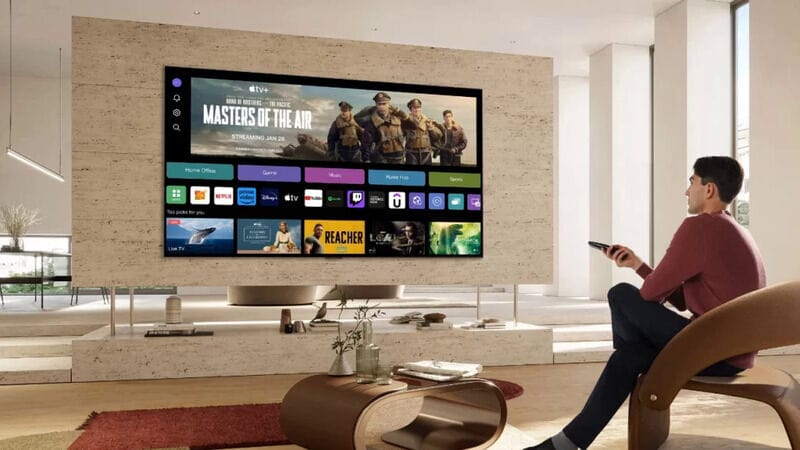How should we operate a television?
Here we learn how should we operate a television Television has become an integral part of modern life, serving not only as a source of entertainment but also as a means of staying informed and connected with the world. With advancements in technology, televisions now offer an array of features and settings that can enhance your viewing experience. However, many users may not know how to optimize these features for maximum enjoyment. This comprehensive guide will explore various aspects of operating a television to ensure a superior viewing experience How should we operate a television?
How should we operate a television?
I. Choosing the Right Television:
- Display Technology: Understanding the differences between LED, OLED, QLED, and other display technologies can help you select a television that meets your needs.
- Resolution: Higher resolutions, such as 4K and 8K, offer sharper images and more detail, but consider factors like viewing distance and content availability before choosing.
- Screen Size: Selecting an appropriate screen size based on the viewing distance and room dimensions can greatly impact your viewing experience. And How should we operate a television?
II. Setting Up Your Television:
- Placement: Position your television at eye level and ensure there are no obstructions that could affect viewing angles.
- Calibration: Use the built-in calibration tools or professional calibration services to adjust settings like brightness, contrast, color, and sharpness for optimal image quality.
- Connectivity: Connect external devices such as cable/satellite boxes, streaming devices, gaming consoles, and sound systems using HDMI or other compatible ports.
III. Optimizing Picture Quality:
- Picture Mode: Experiment with different picture modes (e.g., Standard, Cinema, Sports) to find the one that best suits your preferences and the content you’re watching.
- Motion Smoothing: Disable motion smoothing (often referred to as the soap opera effect) for a more natural-looking picture, especially with film and scripted content.
- Aspect Ratio: Adjust the aspect ratio settings to match the content format (e.g., widescreen movies, standard TV broadcasts) and avoid distortion.
IV. Enhancing Audio Experience:
- Audio Settings: Explore the TV’s audio settings to adjust parameters like equalization, surround sound, and dialogue enhancement for clearer and more immersive audio In Led Tv How should we operate a television?
- External Speakers: Consider investing in external speakers or a soundbar for superior audio quality, especially for larger rooms or when watching movies.
- Room Acoustics: Address room acoustics by minimizing echoes and reflections through the use of rugs, curtains, and acoustic panels to improve sound clarity.
V. Utilizing Smart Features:
- Internet Connectivity: Connect your television to the internet to access a wide range of smart features, including streaming services, apps, and web browsing.
- Voice Control: Take advantage of voice control capabilities (if available) to navigate menus, search for content, and control smart home devices using voice commands.
- Software Updates: Regularly update your television’s software to ensure optimal performance, security, and access to the latest features and improvements.
VI. Managing Power Consumption:
- Energy Saving Mode: Enable energy-saving features to reduce power consumption when the television is not in use, such as automatic brightness adjustment and standby mode.
- Timer Settings: Set timers to automatically turn off the television after a specified period of inactivity to further conserve energy and extend the lifespan of the device.
- Unplugging Unused Devices: Disconnect peripherals and accessories when not in use to prevent standby power consumption and reduce overall energy usage.
VII. Enhancing Accessibility:
- Closed Captions: Enable closed captions for viewers with hearing impairments or to improve comprehension, especially in noisy environments.
- Audio Descriptions: Enable audio descriptions for visually impaired viewers to provide additional context and narration of on-screen action.
- Accessibility Features: Explore additional accessibility features such as text-to-speech, magnification, and color inversion to accommodate diverse user needs.
we should follow this rules for How should we operate a television?
Conclusion: By following the guidelines outlined in this comprehensive guide, you can significantly enhance your television viewing experience. Whether you’re enjoying your favorite movies, binge-watching TV shows, or staying updated with the latest news and sports events, optimizing your television settings and utilizing its features to their full potential will ensure that you get the most out of your entertainment system. Experiment with different settings, explore new technologies, and stay informed about updates and advancements to continuously improve your viewing experience and stay ahead in the ever-evolving world of television technology.

